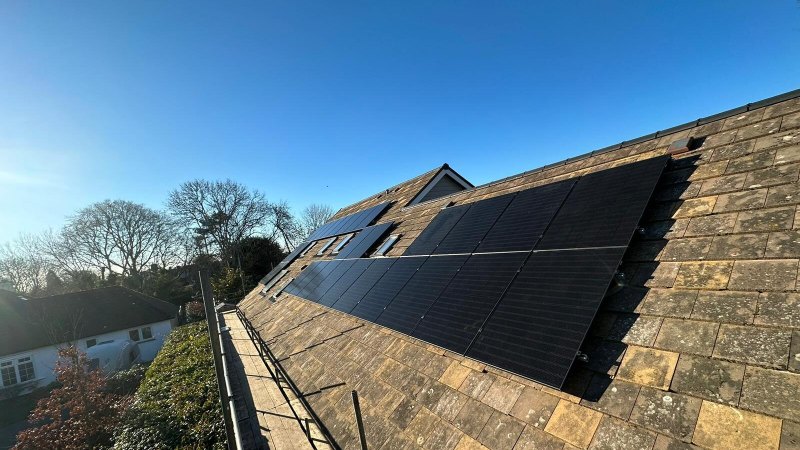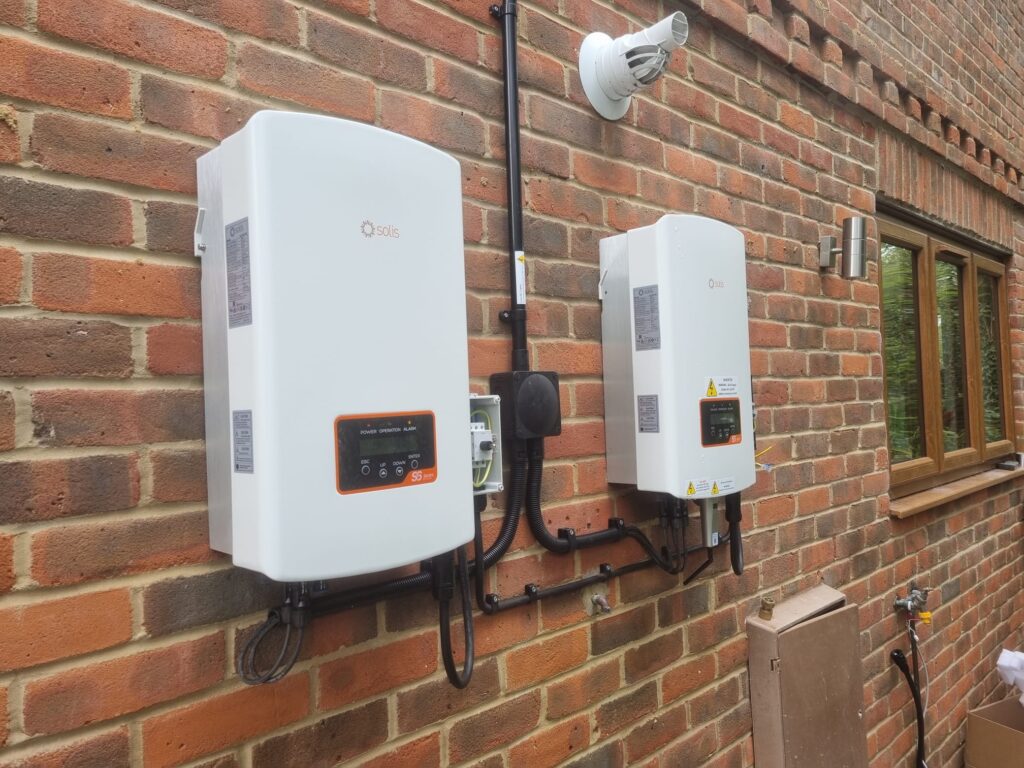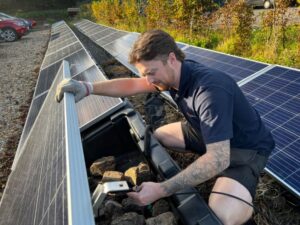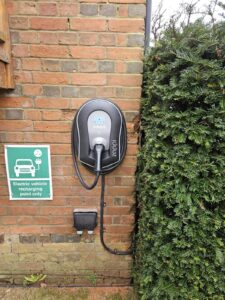
Watt (W):
The watt is the basic unit of power in the International System of Units (SI). It is named after James Watt, a Scottish inventor who played a significant role in the development of the steam engine.
In the context of electricity, a watt measures the rate at which electrical energy is used or produced. For example, if a device has a power rating of 100 watts, it consumes or produces 100 joules of energy every second.
Kilowatt (kW):
The kilowatt is a larger unit of power, equivalent to 1,000 watts. It is commonly used to express the capacity or output of electrical devices on a larger scale, such as in homes, businesses, or power plants.
When dealing with larger amounts of electrical power, it’s more convenient to use kilowatts to avoid dealing with large numbers of watts. For instance, a typical household might have an electricity usage measured in kilowatt-hours (kWh), and power capacity of devices might be expressed in kilowatts.
The prefix “kilo-” denotes a factor of 1,000, so 1 kilowatt is equal to 1,000 watts.
In the context of solar panels and renewable energy, the capacity of a solar panel system is often measured in kilowatts, and the energy produced or consumed is measured in kilowatt-hours (kWh), which represents the amount of energy generated or consumed in one hour at a rate of one kilowatt.
Kilowatt hour
A kilowatt-hour (kWh) is a unit of energy commonly used in the context of electricity consumption and production. It represents the amount of energy consumed or produced over a period of one hour at a constant rate of one kilowatt.
A kilowatt-hour is a measure of energy expended or generated over the course of one hour at a rate of one kilowatt. It is commonly used as a billing unit by utilities companies to measure and charge for the amount of electricity consumed by households, businesses, or other consumers.
For example, if you have a device with a power rating of 1 kilowatt and it operates for one hour, it would consume 1 kilowatt-hour of electricity. Similarly, if you have a solar panel system with a capacity of 5 kilowatts and it operates for 3 hours, it would generate 15 kilowatt-hours of electricity. The kilowatt-hour is a fundamental unit for understanding and managing electrical energy consumption and production.
Consumption
A household’s consumption is how much energy they use. Usually, in the context of solar, we talk about annual or yearly consumption, and we measure it in watts or kilowatts.
Your consumption may be higher if you have items in your home that are high energy using such as air source heat pumps, air conditioning, swimming pools, hot tubs and electric vehicles. If you have any high energy using items in your home, solar panels would almost certainly benefit you.

DNO
The DNO or Distribution Network Operator are the companies licensed for distributing electricity around the UK. These companies own and operate the system of cables and towers that bring electricity from the national transmission network to our homes and businesses.
When installing solar on your property, the DNO needs to be notified and if it is over a specified size of system, permission to connect needs to be applied for.

G98 and G99
The Energy Networks Association (ENA) is the trade association for the energy networks. Their members own and operate the wires and pipes which carry electricity and gas into your community, supporting our economy.
G98 and G99 are ENA standards that outline the requirements for connecting generators in parallel with public low voltage networks. Standards G98 and G99 superseded the previous ENA standard G59 on 17 May 2019.
If you are connecting single or multiple phase generators at a single premises of up to 16A (3.68kW) per phase, you will need to complete a G98 notification form.
If you are connecting single or multiple phase generators at multiple premises of up to 16A (3.68kW) per phase, you will need to complete a G98 application form before you can connect.
If you are connecting large scale generation, above 16A (3.68kW) per phase or energy storage, then you will need to complete a G99 form.
If you are installing micro-generation at a single premises, you can carry out the installation but must notify your DNO within 28 days of commissioning. The same criteria applies if you are connecting micro-generation at multiple premises that are more than 500 meters apart.

PV
The term “photovoltaic” (often abbreviated as PV) refers to the direct conversion of light (photons) into electricity (voltage) using semiconductors, a process known as the photovoltaic effect. Photovoltaic technology is the basis for solar cells and solar panels used in solar energy systems. “Photo” derives from the Greek word “phos,” meaning light. In the context of photovoltaics, “photo” signifies the use of light. Voltaic is named after Alessandro Volta, an Italian physicist who invented the voltaic pile, an early form of the electric battery. In the context of photovoltaics, “voltaic” relates to the generation of electrical voltage. Therefore, “photovoltaic” essentially means the generation of electricity (voltage) from light. Solar cells, also known as photovoltaic cells, are made from semiconductor materials, usually silicon, that exhibit the photovoltaic effect.
Payback period
The payback period is calculated by taking into account the cost of the solar PV system and the cost you would usually pay for your electricity imported from the National Grid. It also considers how much you export from your excess solar energy. You pay back period is essentially how long it takes to recover the money spent on your solar PV system through the savings you have made on your energy bills thanks to the PV.
Return on Investment
Return on Investment (ROI for short) is calculated for the total lifetime of your panels. It measures how much money your panels make of save you from the moment they’re installed until the moment they stop working. As standard, the lifetime of the panels is usually considered to be the same as their warranty period.
To calculate the ROI of your system, you will need to know the total cost of your installation and the total benefit of your installation over its lifetime. You then subtract these to calculate the Net Benefit. Finally, to calculate the ROI percentage, you will need to divide the net benefit by the total cost of the system and multiply the answer by 100%.
MCS
MCS is a standards organisation. They create and maintain standards that allow for the certification of products, installers and their installations. MCS certifies low-carbon products and installations used to produce electricity and/or heat from renewable sources. It is essentially a quality mark and membership to MCS shows adherence to the recognised industry standards.

RECC
The Renewable Energy Consumer code (RECC) is an organisation that ensures consumers wishing to install a small-scale heat or power generation unit for their homes, have the necessary confidence and service standards so that they can make an informed choice. Members of the RECC are firms selling or leasing small-scale renewable systems who have agreed to comply with the rules of the RECC. The code is backed by the Trading Standards Institute as part of a self-regulation initiative, the Consumer Codes Approval Scheme.

CHAS
Similar to the RECC above, CHAS (the Contractors Health and Safety Assessment Scheme) is an accreditation awarded to companies that show their Health and Safety processes meet the standard set out by CHAS. The accreditation is awarded after qualified health and safety professionals complete an assessment of the business’s documentation and procedures to confirm that they’re fulfilling everything required by law.

Inverter
An inverter is an essential part of a solar panel system. It is responsible for taking the electricity produced by the solar panels in the form of AC current, and converting it into DC current, ready to be used by the property. They come in different sizes to suit the number of solar panels and are usually mounted on a wall.




